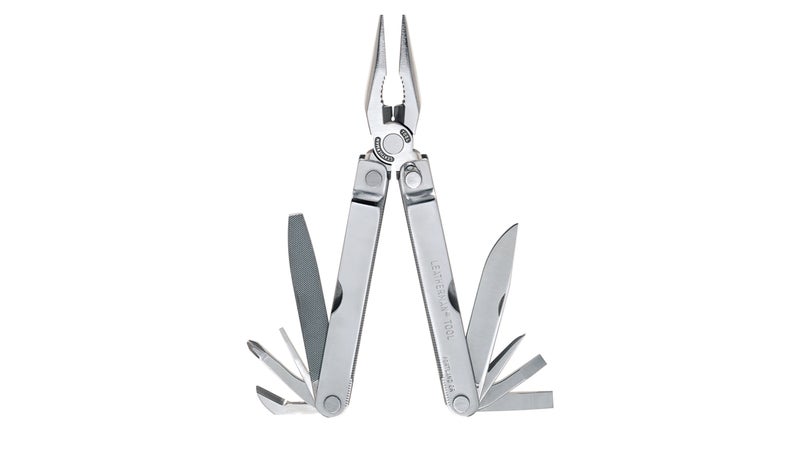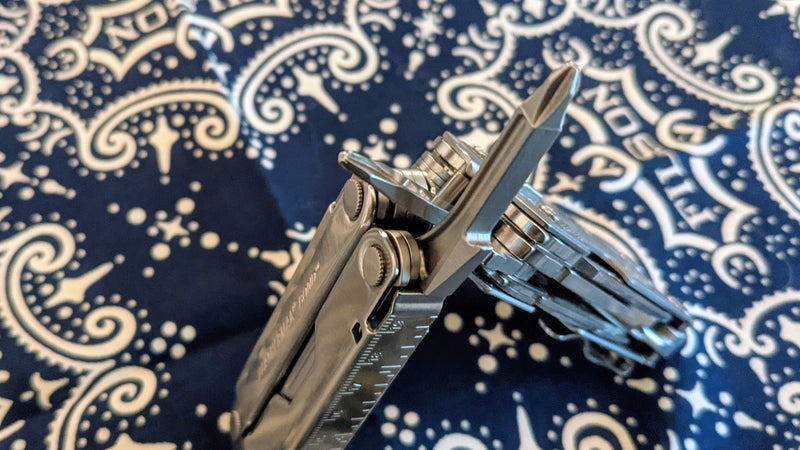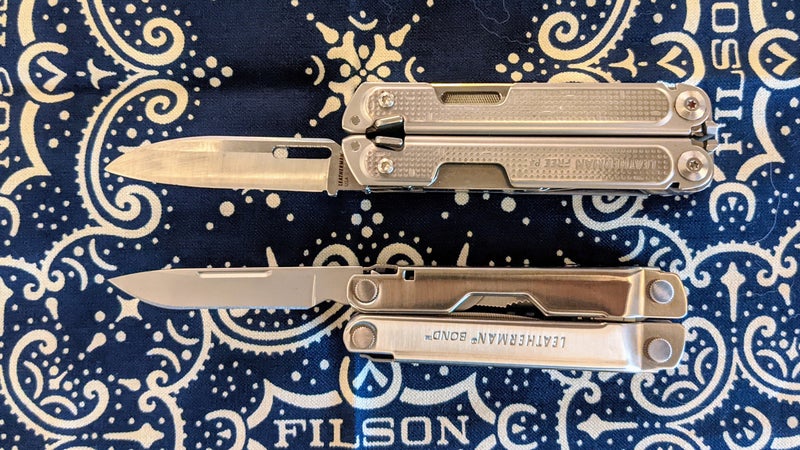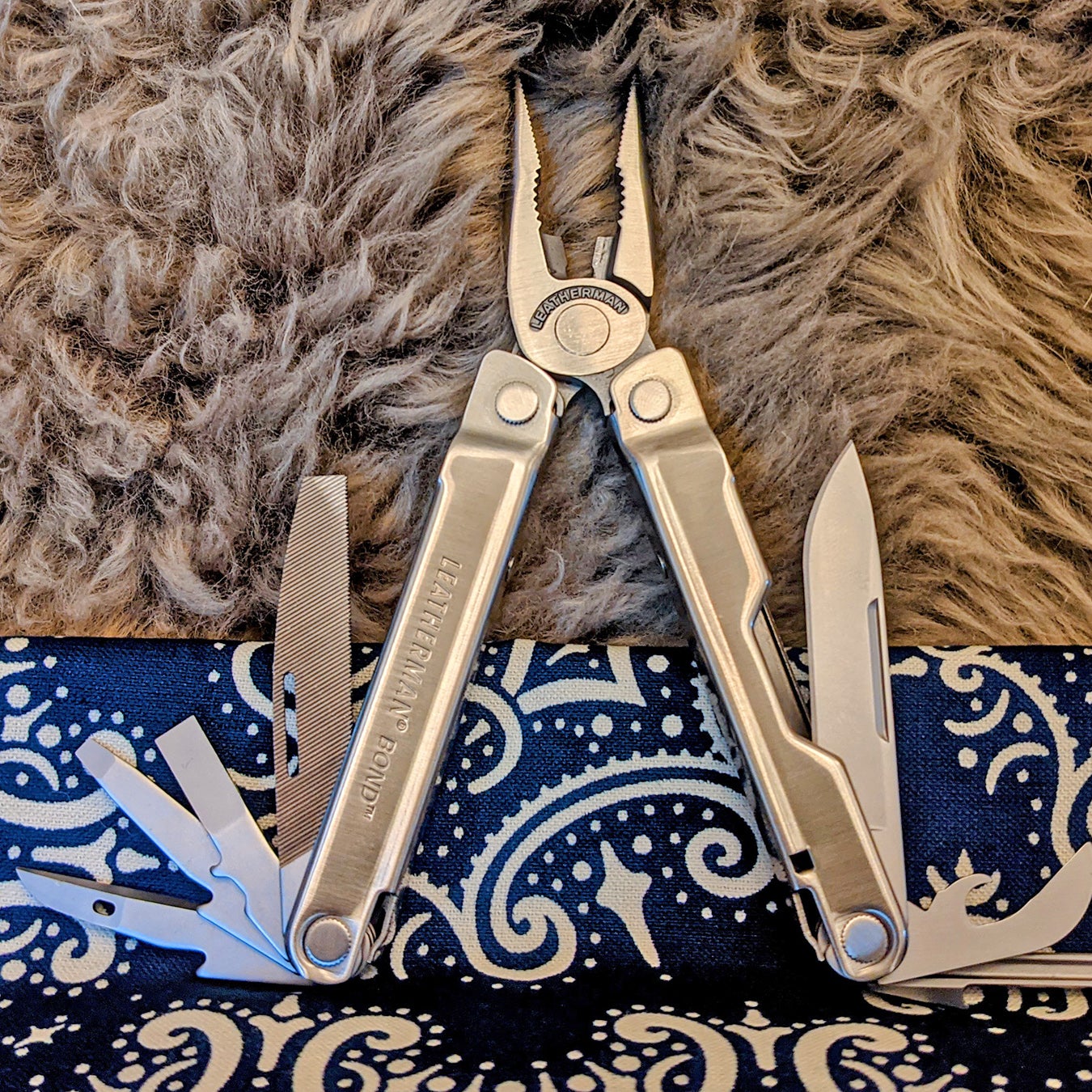In 1975, a young engineer named Tim Leatherman came up with an idea for a pair of pliers that would fit in your pocket. It took him five years to perfect the design, and another three to find a customer for it. But —Leatherman now produces $100 million of��multitools annually at its factory in Portland, Oregon. Recent innovation at the company has focused around high-tech tools that are wearable, one-hand accessible, and designed for specific activities. But for this latest tool, Leatherman went back to its roots��and produced a retro adaptation of Tim’s original Pocket Survival Tool.
Named the Bond, the tool is more a modern��update��to��the PST than it is a faithful recreation. The toolset is very similar (it adds a wire stripper to the base of the can opener, and goes without a large screwdriver), but packs those features into a slightly more rounded, pocket-friendly package. Also like the original PST, the Bond contains a lot of value. Where Tim worked hard to refine his original tool into something he could sell for $25 in 1983, actually goes for about 30 percent cheaper, adjusted for inflation.

There’s a lot to like about��this slim, simple, sleek throwback. Containing all its tools inside the handle—unlike more modern Leathermans, you have to open the pliers to access them—the Bond doesn’t snag on pockets. And while the Bond’s toolset is minimal compared to the company’s other options, the tools included are robust��and well-designed.
Take the Phillips screwdriver on the Bond, for instance. It’s a true number-two��design (the most common size)��that’s fully three-dimensional. That same tool on Leatherman’s latest flagship, the Free P4 ($140), is squished down into a less useable, nearly two-dimensional format. As a result, I reached for��for the simpler Bond, rather than the much more complex Free P4 to adjust a cabinet door yesterday.��And it got the job done without fuss or stripped��screw heads.

The Free P4 compromises the utility of its Phillips driver��to pack more tools—21 versus 14—into a package that’s less than one-tenth of an inch thicker. Those extra tools are really useful if you find yourself someplace with only a Free P4 to call on. But for simple everyday tasks, the Bond’s lower tool density can sometimes prove preferable. I could have walked out to my garage and gotten my tool box to repair that cabinet, if I’d needed to, but the number-two��Phillips in the Bond was just as good as the one I keep in my box.

Where the Bond finds itself lacking in comparison to modern Leathermans is in speed of tool access. To open either of the two knife blades on the Free P4,��all I have to do is flick them from the side of the closed tool��using a fingertip. To access the single, straight-edge blade on the Bond, you first have to open the pliers, then locate the blade, and finally��use your fingernail to pick��it open. Then, before you use it, you have to close the pliers. That design also means that the Bond’s blade��protrudes��from the top pliers handle, with access to the edge partially obstructed by the width of the other handle below it.
The Bond also sacrifices mechanical locks for its blade and other tools, relying instead on tension to hold those tools open. That means it’s not quite as safe to use as other Leathermans, but the lack of lock bars or other mechanisms helps keep the tool’s exterior streamlined. Going without a locking knife blade also helps make the tool legal to carry in the United Kingdom and the European Union, where locking blades of any kind are prohibited in public. Other Leatherman tools are illegal there for that reason.

It’s an indication of how far Tim Leatherman’s original idea has come that the Bond’s unique selling point isn’t how many tools it carries. Instead, it’s the tool’s positively elegant lines that give the Bond its appeal. It’s a welcome reminder that there was a time when it wasn’t an everyday occurrence to be able to walk out of the house carrying two-dozen or so tools in your pocket. The fact that a humble multitool can also now be a symbol��of style also indicates just how universal these things have become.


